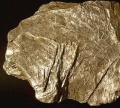Difference between revisions of "Category:Tin: Ukiyo-e colorant"
| Line 45: | Line 45: | ||
X-ray fluorescence analysis (XRF) is used to detect tin. | X-ray fluorescence analysis (XRF) is used to detect tin. | ||
<gallery mode="packed" heights="200px" style="text-align:left;"> | <gallery mode="packed" heights="200px" style="text-align:left;"> | ||
| − | + | tin xrf.PNG|<center>XRF spectrum for tin</center> | |
</gallery> | </gallery> | ||
Revision as of 00:36, 19 November 2020
Tin 錫(suzu): Flakes or powdered metallics are often found in deluxe editions and surimono prints. Tin was commonly used for metallic silver colored areas on a print. Animal glue (nikawa) was commonly used to adhere the flakes to the paper's surface or as a binder when printed. The use of affordable metals such as brass and tin were likely meant to imitate the glittering effects created by the use of expensive metal leaf or flakes such as gold and silver on screen and scroll paintings.
As with printed brass, tin is often seen on surimonos and deluxe editions.
For more information see: Tin
Examples of Tin in Ukiyo-e Prints

|

|

|

|

|
Analysis
X-ray fluorescence analysis (XRF) is used to detect tin.
- Tin xrf.PNG
XRF spectrum for tin
Other Images of Tin
List of Prints
Below is a list of prints where tin was detected.
Pages in category "Tin: Ukiyo-e colorant"
The following 6 pages are in this category, out of 6 total.
E
H
S
- Shigenobu I, Urashima Tarô, from the series A Set of Five Examples of Longevity, 21.9254
- Shinsai, Chapters 22–24, from the series The Tale of Genji, 11.20034
- Shunman, Mandarin Ducks and Iris, from the series Series of Seven Bird-and-Flower Prints for the Fuyô Circle of Kanuma in Shimotsuke Province, 21.9226



